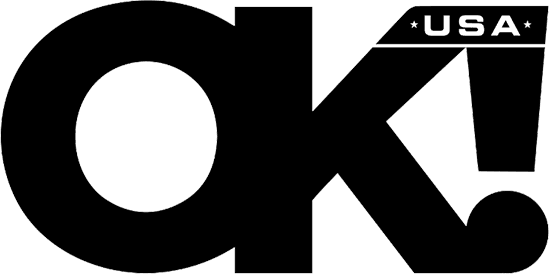 NEWS
NEWSSecurity Gates Installation: Professional Tips for Safety, Durability, and Compliance

Sept. 19 2025, Published 1:33 a.m. ET
Installing a security gate is one of the most effective ways to enhance the safety of a property, control access, and elevate its overall appearance. Whether for a residential home, commercial facility, or industrial site, a well-installed security gate serves as both a physical barrier and a psychological deterrent. However, achieving optimal results requires more than just choosing a gate and placing it at the entrance. Professional installation demands careful planning, technical expertise, and a thorough understanding of safety standards, durability requirements, and legal compliance. This article explores the essential tips and considerations that professionals rely on to ensure a successful and lasting security gate installation.
Site Assessment and Planning for Safety
The first step in any security gate installation is a comprehensive site assessment. Professionals begin by evaluating the terrain, existing infrastructure, and traffic patterns to determine the most strategic location for the gate. This includes identifying potential hazards such as uneven ground, drainage issues, or nearby obstructions that could interfere with gate operation. Safety is paramount during this phase, as improper placement can lead to accidents, restricted emergency access, or reduced visibility for drivers and pedestrians.
Once the site is assessed, the planning process involves selecting the appropriate gate type for the specific needs of the property. Swing gates, sliding gates, and barrier arms each offer distinct advantages depending on space constraints and usage frequency. For example, sliding gates are ideal for properties with limited clearance, while swing gates may be preferred for their classic appearance and straightforward mechanics. The choice of gate must align with the intended security level, aesthetic goals, and operational requirements.
Professionals also consider the integration of safety features such as sensors, warning lights, and emergency release mechanisms. These components help prevent accidents and ensure that the gate can be operated safely under all conditions. Proper signage and lighting further enhance safety by guiding users and alerting them to the presence of the gate.
Material Selection and Engineering for Durability
Durability is a critical factor in the long-term performance of a security gate. The materials used must withstand environmental stressors, frequent use, and potential tampering. Professionals typically recommend galvanized steel, aluminum, or wrought iron for their strength, resistance to corrosion, and low maintenance requirements. Each material offers unique benefits, and the choice often depends on climate, budget, and design preferences.
In addition to selecting robust materials, professionals pay close attention to the engineering of the gate structure. This includes reinforcing joints, using high-quality fasteners, and ensuring that the gate frame is properly anchored to withstand wind loads and impact. The gate’s moving parts—such as hinges, rollers, and tracks—must be designed for smooth operation and minimal wear. Lubrication systems and weatherproof seals are often incorporated to extend the lifespan of these components.
Automation adds another layer of complexity and durability considerations. Motorized gates require reliable power sources, surge protection, and weather-resistant enclosures for control units. Professionals ensure that the automation system is compatible with the gate’s weight and usage frequency, preventing strain on the motor and reducing the risk of breakdowns. Backup power options, such as battery systems or solar panels, may be installed to maintain functionality during outages.
Want OK! each day? Sign up here!
Navigating Legal Compliance and Regulatory Standards
Security gate installation is subject to a range of legal and regulatory requirements that vary by location and property type. Professionals must be well-versed in local building codes, zoning laws, and safety regulations to ensure compliance. This includes obtaining necessary permits, adhering to setback requirements, and ensuring that the gate does not obstruct public pathways or emergency access routes.
Accessibility standards are another important consideration. Gates must accommodate individuals with disabilities, which may involve installing automated openers, tactile signage, or voice-activated controls. Fire safety regulations often require that gates include emergency release mechanisms that allow first responders to gain access quickly in the event of a fire or medical emergency.
Professionals also ensure that the installation complies with industry standards for electrical wiring, structural integrity, and automation systems. This may involve inspections by certified engineers or coordination with utility providers to ensure safe and legal connections. Failure to comply with these standards can result in fines, legal disputes, or the need for costly modifications.
Insurance requirements may also influence the installation process. Some policies mandate specific security measures or certifications for gates to be covered under property protection clauses. Professionals work with clients to understand these requirements and ensure that the installation meets all necessary criteria.
Post-Installation Testing and Maintenance Planning
Once the gate is installed, thorough testing is essential to verify its functionality and safety. Professionals conduct operational tests to ensure that the gate opens and closes smoothly, responds to control inputs, and activates safety features as intended. Load testing may be performed to assess the gate’s structural resilience, and electrical systems are checked for proper grounding and insulation.
Maintenance planning is a key component of professional installation. A well-maintained gate performs better, lasts longer, and reduces the risk of unexpected failures. Professionals provide clients with maintenance schedules, including routine inspections, lubrication, cleaning, and component replacement. They may also offer service contracts or training for on-site personnel to handle basic upkeep.
Monitoring systems can be installed to track usage patterns, detect anomalies, and alert owners to potential issues. These systems enhance security and allow for proactive maintenance, minimizing downtime and repair costs.
Conclusion: The Value of Professional Expertise
Security gate installation is a complex undertaking that demands technical skill, regulatory knowledge, and a commitment to safety and durability. By relying on professional tips and best practices, property owners can ensure that their gate not only enhances security but also complies with legal standards and withstands the test of time. From site assessment and material selection to compliance and maintenance, every step plays a crucial role in the success of the project.
Investing in professional installation by Zimmer gates and doors is not just about getting the job done—it’s about getting it done right. A well-installed security gate offers peace of mind, protects valuable assets, and contributes to the overall integrity and appeal of the property. With the right expertise, homeowners and businesses can enjoy the benefits of enhanced security without compromising on quality or compliance.


